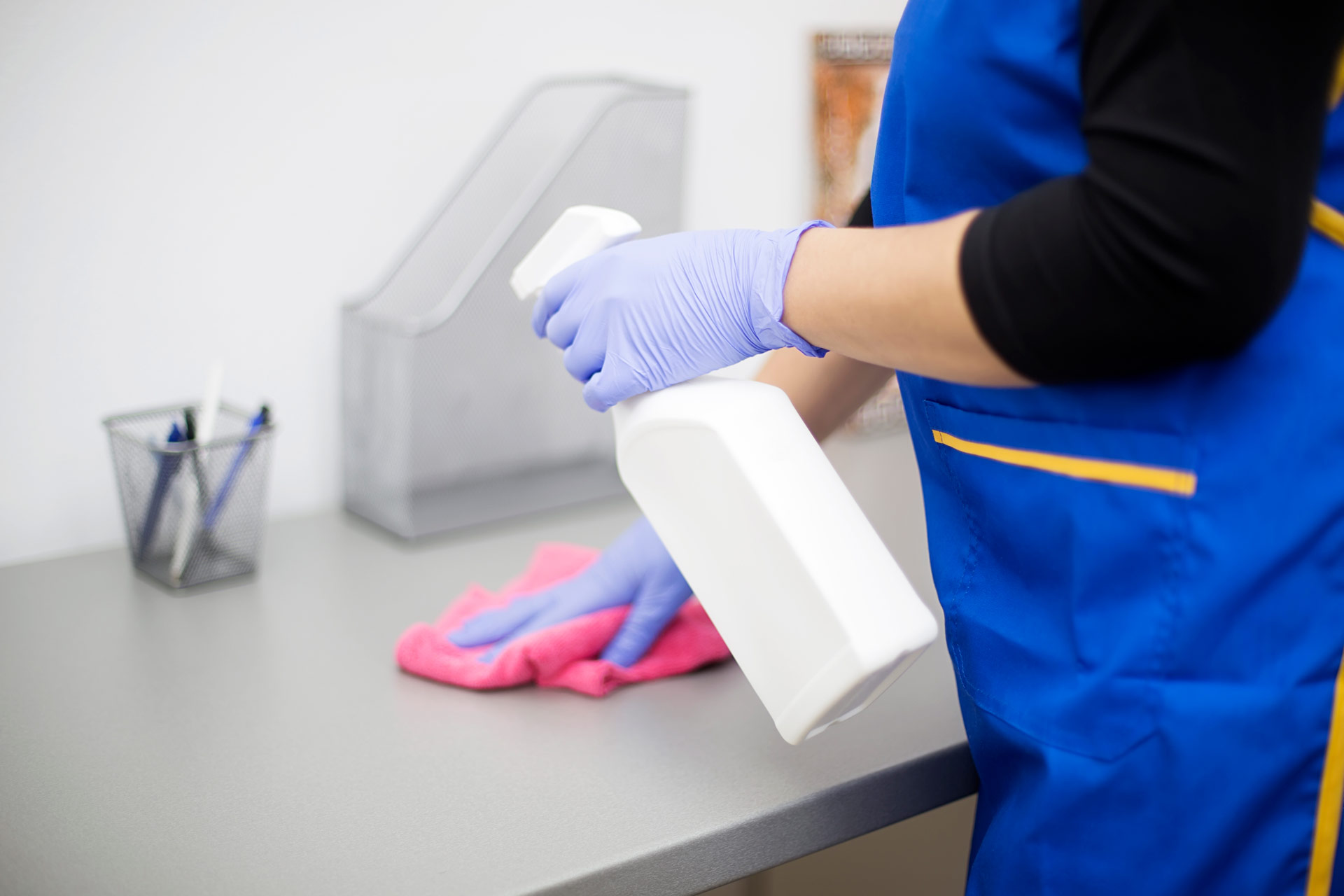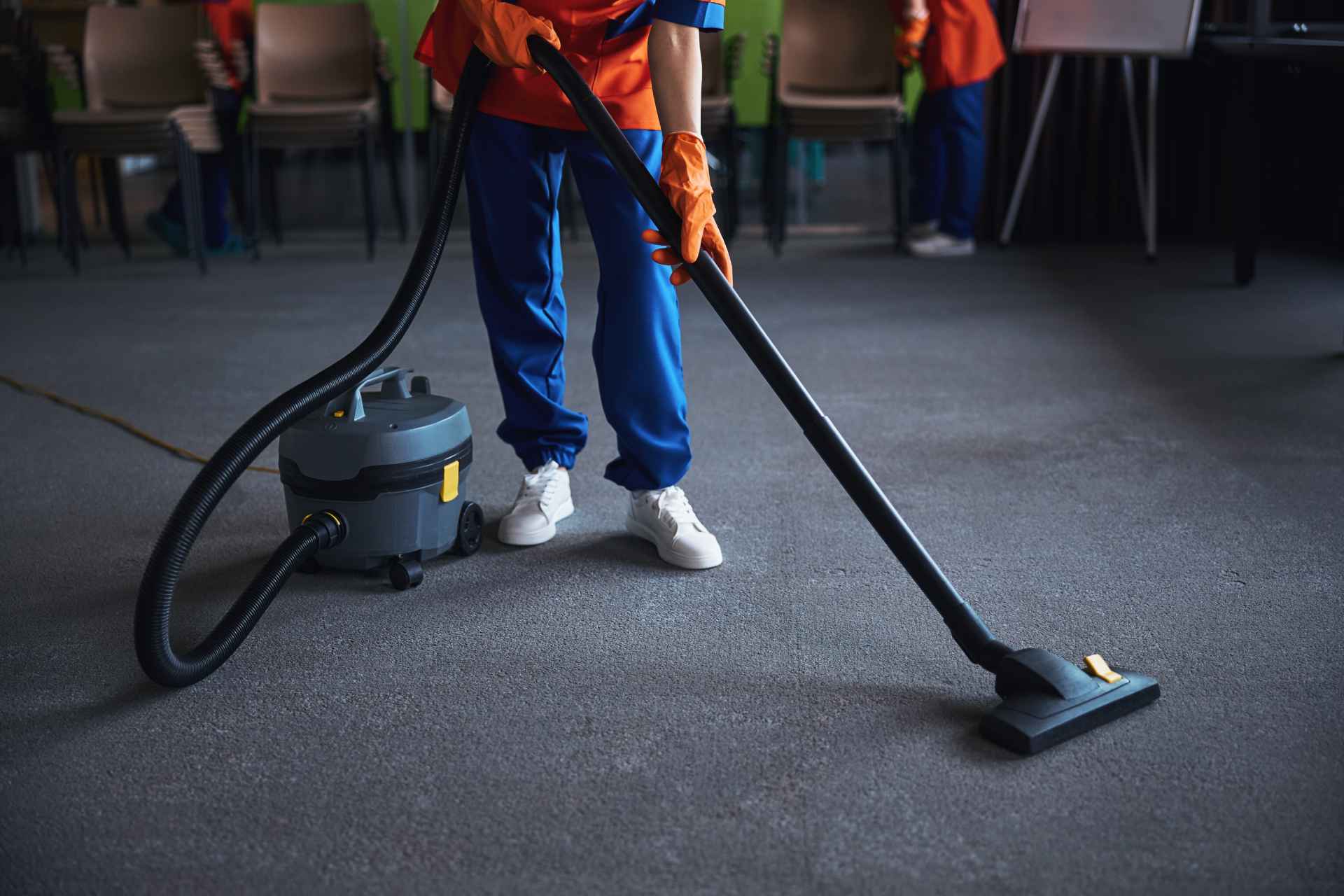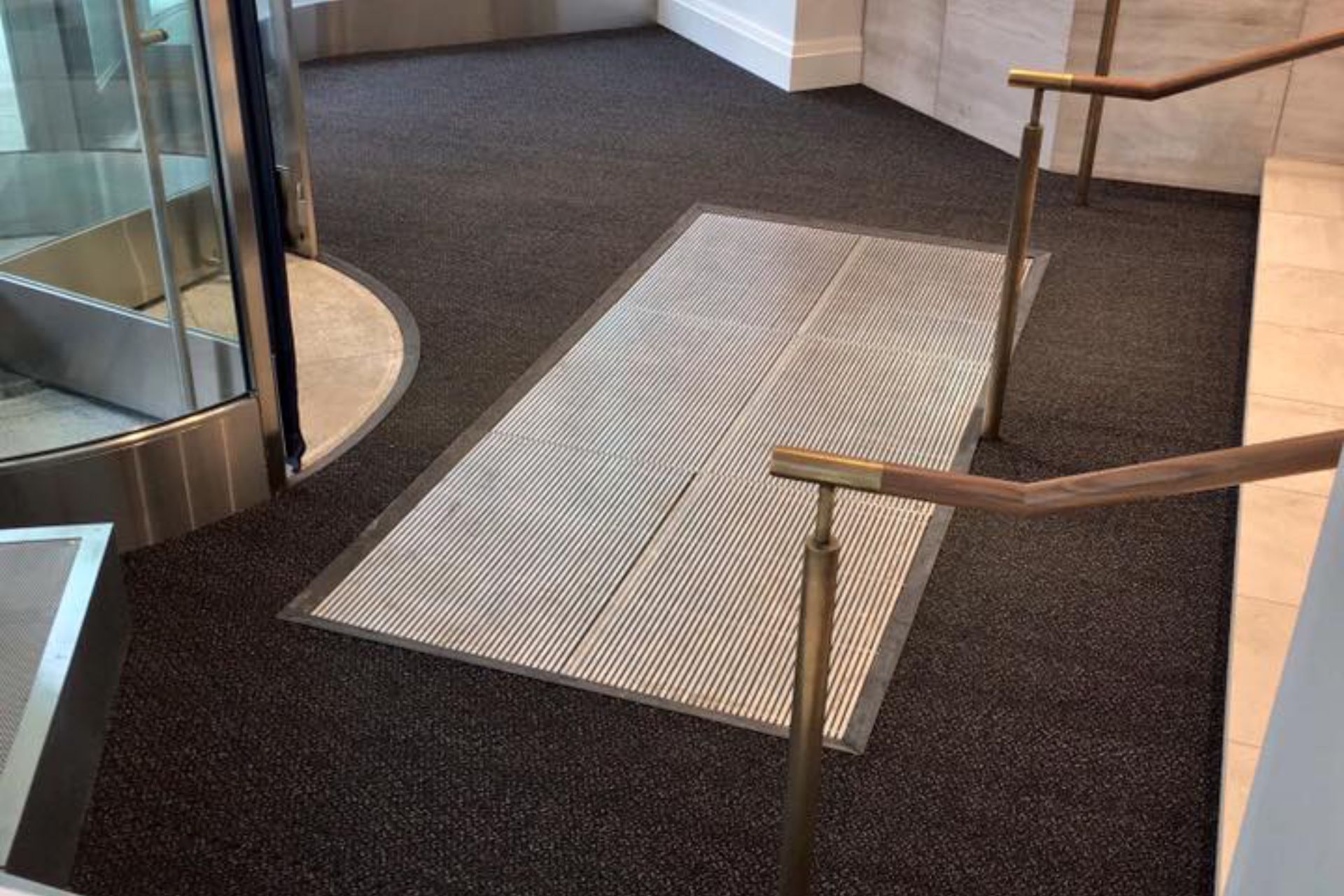When winter weather strikes it can dramatically change your workplace. Snow, ice, freezing rain, and cold temperatures bring with them a whole new set of safety hazards than the rest of the year. Many of the items that will help you get through the cold weather months are likely already on-site, but do not wait until the snow falls to review winter safety protocols, educate staff of cold weather dangers, and ensure the tools and equipment that will be required are stocked and ready for use. Using appropriate equipment and industrial cleaning supplies can ensure your workplace is not only clean, but also safe.
Entrance mats for a cleaner and safer interior
Building entrances allow dirt, dried leaves, and other slippery nuisance objects to enter your property even in dry weather. When rain or snow enters the picture, especially on a smooth, polished floor, the difficulties can increase quicker than you can grab a wet floor sign. Entrance mats are a typical line of defense for collecting dirt, rain, and snow when personnel enter the workplace, but only if they are of the appropriate type and length. Ideally the length should be long enough to take three to size steps before stepping off the mat and onto the hard flooring, with longer the mat, the better. The backing of these mats should also have an anti slip material that prevents these mats from sliding. The overall design of the mat should allow dirt, rain and snow to collect on the bottom but away from the walking surface with borders that do not allow water to drain off of the mat.
When the weather is severe, keep in mind that strong rain or snow events might overwhelm rubber-backed entry mats. They will be unable to fulfill their purpose if they are completely soaked. If you notice tracks when someone walks off a mat, or if there is a puddle surrounding the entry mat, it is saturated and is not assisting you in maintaining a safe entrance. Saturated rubber-backed mats must be changed so that they do not contribute to the slip hazard by creating the mistaken impression that the area is safe. It’s a good idea to keep a second, and maybe a third, pair of dry mats on hand for when the weather turns nasty.
Prevent slippage on the sidewalk or parking lot with Ice Melt
Sidewalk maintenance is frequently mixed with general parking lot maintenance. However, the two surfaces are frequently distinct. Parking lots are commonly made of asphalt or gravel, while walkways are typically made of raw cement or clay brick. When it snows, they are also treated differently. Parking lots are normally plowed, although walkways are shoveled or blown with snow. Icy patches in a parking lot may be addressed with rock salt, but sidewalks are usually coated with a salt replacement or Ice Melt. Recognizing these distinctions can aid in increasing safety in both locations when snow or ice is expected.
One hazard that both parking lots and sidewalks have is that snow and ice increase slipping hazards considerably, especially when snow conceals a layer of ice beneath it. Keeping outside areas clean of snow and ice in the winter may be a major task, especially for large outdoor facilities. It is critical to have a solid plan in place for dealing with snow and ice in parking lots and on walkways. Another advantage of keeping parking lots and walkways clean is that less snowmelt enters the building on people’s feet, which means entrance ways are not as quickly clogged.
Clean floors saves your reputation and prevents accidents
During a winter season an abundant amount of sand and salt can be used to deice or add traction to all areas surrounding a facility. With it being everywhere they can find their way underneath your cars, the soles of your shoes and eventually inside your workplace as co-workers trudge them in. Foot traffic scrapes hard surfaces and wears away floor polish with sand, rock salt, and snow melting chemicals.
Over time, these materials become squished into carpets beneath desks and tables. Such corrosive compounds generate stains and wear away carpets, necessitating replacement considerably sooner than routine cleaning would. During the chilly winter months, all of the winter care products adhere to shoes and boots, and it all gets tracked around your business. The smear seems unclean and unprofessional on wood, tile, carpeted floors, and marble. Having a professional cleaning company come in on a regular basis guarantees that the floors in your workplace are cleaned and shampooed to safeguard your professional image and ensure adequate safety to all those inside.
A clean and safe place boosts morale and productivity
The visual condition of an area sets the tone for the work day, thus sustaining a professional reputation and employee wellbeing during the workweek requires an office space that looks and feels tidy. A professional cleaning company can wash your windows to brighten the space, eliminate garbage to limit germs and aromas, detail coffee areas, sterilize washroom facilities, and shine up a messy meeting room. All of these factors contribute to a more pleasant working environment, which helps to dispel negativity that might accumulate over the gloomy winter months.
In addition, when employees enter a well-maintained environment, they feel more at ease. Many employees can endure stress in a messy office, particularly as a result of other people’s mess or the employer’s unwillingness to maintain a healthy work environment. When a work environment is kept clean, co-workers are more likely to take pride in their space and be more productive throughout the day.
The use of the right equipment, industrial cleaning supplies, and appropriate maintenance can ensure that your workplace is safe, clean, and upholds its image. However, another important aspect for a safe work environment during the winter months or any time of the year for that matter is appropriate communication to all co-workers and residents of the facility. Snow, ice, and low temperatures, unlike other occupational dangers, cannot be avoided. However, with advance preparation and communication, everyone may be prepared and lessen the likelihood of injury.






